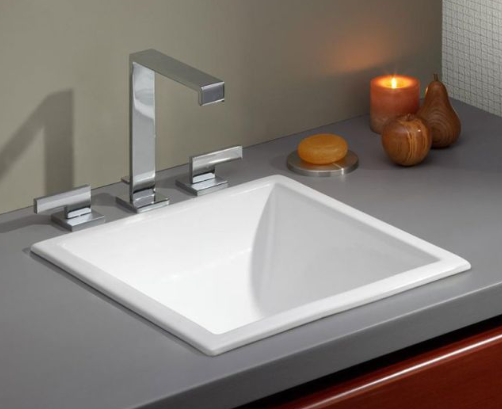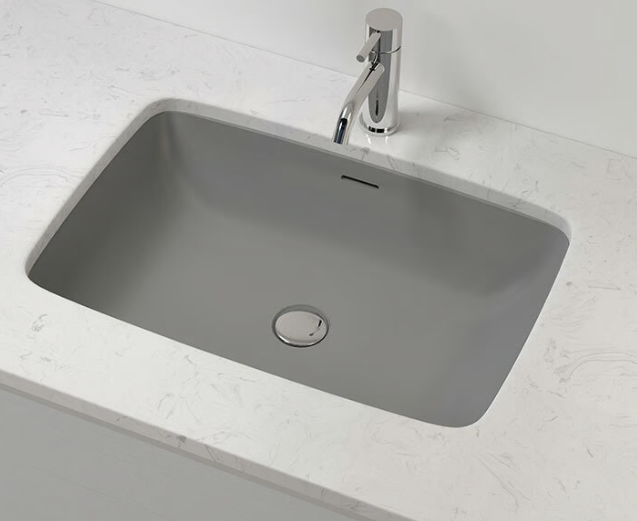When choosing sinks for residential, commercial, or retail projects, the terminology can sometimes create confusion. A common point of uncertainty is whether a drop-in sink is the same as an overmount sink. While they share similarities, there are key distinctions that buyers need to understand to make informed decisions. This guide explores their differences, ideal use cases, and how to select the right sink for your business needs, especially if you are involved in B2B procurement.
What Is a Drop-In Sink?
A drop-in sink, also called a top-mount sink, is installed by “dropping” it into a pre-cut hole in the countertop. Its rim sits on top of the counter, making it visible. This type of sink is popular due to its ease of installation and wide-ranging availability across various materials and sizes.

Key Features of a Drop-In Sink:
- Installation Process: Easily installed by fitting the sink into a pre-cut countertop opening.
- Design: The sink’s rim is exposed and rests visibly on the countertop.
- Material Options: Available in stainless steel, porcelain, ceramic, cast iron, and granite composites.
- Applications: Frequently used in kitchens, bathrooms, and utility rooms for both residential and commercial spaces.
- Maintenance: The exposed rim may collect grime, requiring regular cleaning.
What Is an Overmount Sink?
The term overmount sink is sometimes used interchangeably with drop-in sink. However, in certain contexts, overmount sinks may refer to any sink installed above the countertop surface. They emphasize the “above-counter” design rather than focusing on the visible rim.

Key Features of an Overmount Sink:
- Installation Process: Also installed above the counter, with varying rim designs depending on the model.
- Design: Can include minimalist or decorative rims, often for aesthetic appeal.
- Material Options: Often mirrors the materials of drop-in sinks, but higher-end models may include custom finishes.
- Applications: Common in upscale or contemporary projects where aesthetics play a significant role.
- Maintenance: May include smoother edges, making cleaning slightly easier.
Comparing Drop-In Sinks and Overmount Sinks
To clear up any confusion between the two sink types, here’s a direct comparison:
| Feature | Drop-In Sink | Overmount Sink |
|---|---|---|
| Definition | A sink with a rim resting visibly on the countertop. | A broader category of sinks installed above the countertop. |
| Design Style | Functional, often with a prominent rim. | Includes both functional and aesthetic designs. |
| Installation Ease | Requires minimal labor; simply fits into a pre-cut opening. | Similar ease of installation, though may focus more on alignment. |
| Material Variety | Stainless steel, porcelain, granite, and more. | Mirrors drop-in sink materials but may include higher-end finishes. |
| Best Applications | Budget projects or practical installations. | Aesthetic-focused spaces or mid-to-high-end projects. |
Key Differences and Overlaps
While all drop-in sinks are technically overmount sinks, not all overmount sinks are strictly drop-in. Overmount sinks encompass a broader design scope, including some luxury models with unique edge treatments or slimmer rims.
For example:
- Drop-in sinks are favored for utility, durability, and affordability.
- Overmount sinks in premium styles might cater to buyers who prioritize design aesthetics.
Advantages and Disadvantages of Each Sink Type
Drop-In Sinks
Advantages:
- Simple and cost-effective installation.
- Compatible with a variety of countertop materials.
- Easy to replace or upgrade.
Disadvantages:
- The visible rim can collect dirt and grime.
- Less seamless appearance compared to undermount or integrated sinks.
Overmount Sinks
Advantages:
- Aesthetic variety with decorative rims.
- Suitable for a range of kitchen and bathroom styles.
- Easier alignment during installation than undermount sinks.
Installation Guides

Disadvantages:
- Often higher in cost if premium designs are chosen.
- May require precise countertop edge finishing for a polished look.
Which Sink Type Is Better for Your Business?
The choice depends on your target market and project requirements:
- Cost-Sensitive Markets: Drop-in sinks are a go-to solution for budget-friendly projects, such as rental properties or low-cost housing developments.
- Aesthetic-Focused Markets: Overmount sinks with premium designs are better suited for mid-to-high-end markets where design and aesthetics play a critical role.
- Maintenance Considerations: Drop-in sinks may require more frequent cleaning along the rim, while overmount sinks with sleeker edges are easier to maintain.
- Project Type: Large-scale commercial projects, like hotels or apartment complexes, might prefer drop-in sinks for affordability and ease of replacement. On the other hand, boutique residential developments may lean towards overmount sinks for design appeal.
Procurement Tips for B2B Buyers
For B2B buyers sourcing sinks for retail distribution or large-scale projects, consider the following:
- Material Standards: Ensure sinks meet regional certifications like NSF/ANSI standards for North America or CE certifications for Europe.
- Customization Services: Leverage OEM and ODM services to cater to diverse client needs. Offering personalized designs can differentiate your products in competitive markets.
- Bulk Orders: Opt for suppliers with streamlined manufacturing processes to ensure consistent quality across large quantities.
- Market Trends: Monitor regional preferences. For instance, North America often favors practical drop-in sinks, while European buyers may prefer seamless designs.
- Sustainability: Highlight sinks made from recyclable materials to appeal to environmentally-conscious buyers.
Conclusion: Choosing the Right Sink for Your Needs
Understanding the subtle distinctions between drop-in sinks and overmount sinks is essential for informed purchasing decisions. While their differences may seem minor, the right choice can significantly impact functionality, aesthetics, and long-term maintenance.
For businesses sourcing sinks for global markets or large-scale projects, working with a reliable supplier who offers a variety of customizable options is crucial. Contact us to explore our extensive range of drop-in and overmount sinks designed for both practical and upscale applications.
